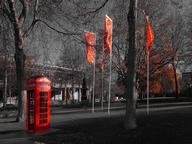Quiz Answer Key and Fun Facts
1. Chaucer's Canterbury pilgrims set out from the Tabard. Where is this inn situated?
2. One of the most enthusiastic poems in praise of London was the work of a Scotsman, and was written about 1501. Its refrain, in modernized spelling, is "London, thou art the flower of cities all". Who wrote it?
3. A comedy by Ben Jonson deals with the adventures and misadventures of visitors to a famous old London fair. The characters include Overdo (a magistrate in disguise who gets put in the stocks) and a ranting Puritan zealot called Zeal-of-the-Land Busy. What is the name of the play?
4. Who wrote "A Journal of the Plague Year 1665"?
5. Which eighteenth-century writer declared that "When a man is tired of London, he is tired of life, for there is in London all that life can afford"?
6. "Earth has not anything to show more fair" is the first line of a sonnet inspired by the view of the sunrise over London from Westminster Bridge. Who wrote it?
7. "Hell is a city much like London" is a line from a work by which early nineteenth-century poet?
8. "London. Michaelmas Term lately over ... Fog everywhere. Fog up the river ... fog down the river, where it rolls defiled among the tiers of shipping and the waterside pollutions of a great (and dirty) city. Fog on the Essex marshes, fog on the Kentish heights. Fog creeping into the cabooses ... fog lying out on the yards ... fog drooping on the gunwales ... Fog in the eyes and throats of ancient Greenwich pensioners, ...; fog in the stem and bowl of the afternoon pipe of the wrathful skipper ... fog cruelly pinching the toes and fingers of his shivering little prentice boy on deck. Chance people on the bridges peeping over the parapets into a nether sky of fog, with fog all round them." This is the slightly abbreviated opening of which Dickens novel?
9. Which of Dickens's novels gives a vivid picture of the Gordon Riots of 1780?
10. One of the most notable figures in the "penny dreadful" literature of Victorian England was Sweeney Todd of Fleet Street, who killed his customers and sold their corpses to a neighbouring pie-maker. What was Todd's trade?
11. Elizabeth Barrett eloped with Robert Browning from her family's house in which Marylebone street?
12. After George Orwell left the Burma police force, he spent a couple of years in poverty in and out of Britain, doing menial work and even living the life of a tramp for a time. His experiences are recalled in "Down and Out In ___________ and London". Which city's name is missing from the title?
13. More than twenty years before Orwell, an American author spent several weeks in the slums of East London and described them in "The People of the Abyss". Who was he?
14. The suburbs which grew up along the north-western end of the Metropolitan Line between the world wars became known as Metroland. Which poet celebrated Metroland in a 1970s television documentary?
15. Which modern author has written a number of novels set in London, including "Hawksmoor", "Chatterton", "The House of Doctor Dee" and "Dan Leno and the Limehouse Golem"?
Source: Author
TabbyTom
This quiz was reviewed by FunTrivia editor
Bruyere before going online.
Any errors found in FunTrivia content are routinely corrected through our feedback system.

